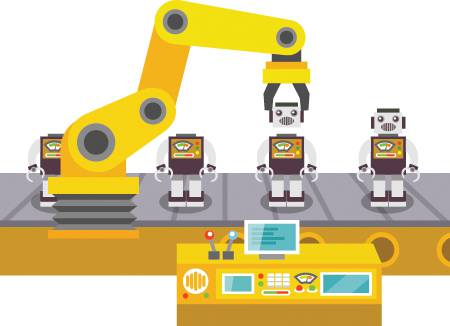Robots build cars, vacuum floors and complete sophisticated, minimally invasive medical procedures. But there’s still one thing they can’t do, a scientific head-scratcher that continues to distinguish machines from human beings: While a robot might outsmart a single human, it cannot defeat two.
Scientists call this human advantage “collective intelligence,” and Paul Oh, head of robotics at UNLV, relates the phenomenon to computer chess programs. “We have the artificial intelligence to beat a grandmaster at chess, and we’ve had that for a while,” Oh says. While a grandmaster might win half of his games against a computer, two mediocre players pitted against the same program will win more often. “Once we design artificial intelligence to beat collective thought, we have entered a new era of artificial intelligence.”
In the meantime, UNLV will tackle this problem and others in its new robotics lab, and you can build your own (theoretical) robot by following these six wildly oversimplified steps.
Step 1: Ask yourself why. What do you want the robot to do specifically? Fold your clothes? Chop your onions? “A strong sense of why is going to shape the what and how,” Oh says.
Step 2: Determine the robot’s requirements. “Does it really need to walk? Can it fly? If it’s going to work in water does it need to swim, or can it float? Does it need arms? Does it need multiple arms?”
Step 3: Conduct a trade study. “We try to figure out what’s minimally acceptable, and what is most desired. For example, if it has to stay on for a long time, what does ‘a long time’ mean?”
Step 4: Find parts. Should the parts be bought or built? Do they even exist? “Function dictates form.”
Step 5: Start prototyping. Then test and evaluate your robot. Does it do what it is meant to do? Do others agree with that statement?
Step 6: Prove it! Third-party test that bot. Does it pass muster? Congrats! You now have a robot.
If you’re worried about artificial superintelligence bumping humans off the map anytime soon, don’t. While there are theories that this will happen, Oh says it’s unlikely.
“Clearly we’ll have the computation power, but [the theory is] missing a lot of other things,” he says. “We don’t talk about the soul and the spirit.”




